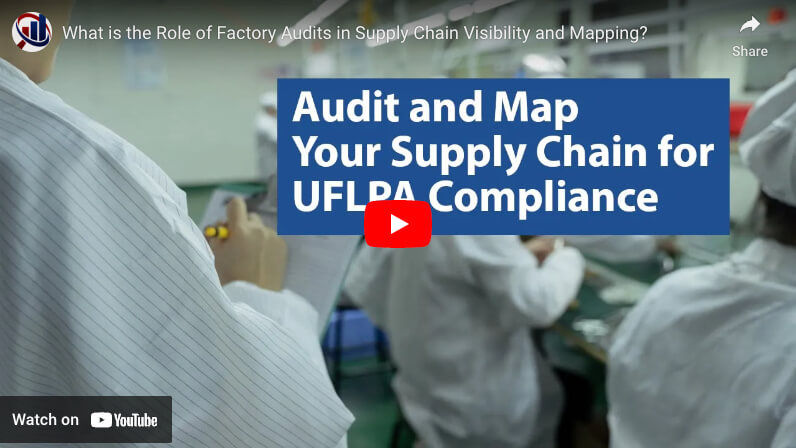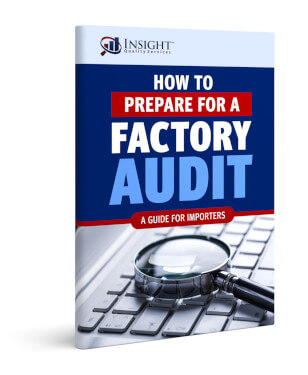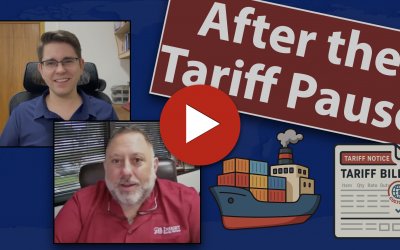Audit Your Factory for Supply Chain Visibility and Mapping
Today, the Uyghur Forced Labor Prevention Act (UFLPA) and similar regulations have thrust supply chain visibility, transparency, and mapping into the spotlight. For many companies, it’s no longer a choice but a necessity to delve deeper into their sub-suppliers—the entities up the supply chain that furnish raw materials and components.
Insight Quality has been a trusted partner, assisting numerous clients in auditing their suppliers to gain a clearer understanding of their product origins. In this video, we share our insights to guide you in auditing your supply chain for potential hidden risks.
Table of Contents
What are Supply Chain Transparency, Mapping, and Visibility?
Billy: In the last few years, people have been concerned with supply chain mapping, visibility, and transparency. So we’re throwing out these terms, but I’d like to get your take on what they mean and why they’re such a big concern for importers.
Andy: I think that transparency, mapping, and visibility all have a lot of overlap.
Mapping would be the act of detailing each supplier in the supply chain, starting with the finished goods. Can you trace back the raw material of each component that makes up a finished good and map all of that?
So, you could have a cotton farm, the processor, the dyer, and then the actual cut and sew, where they make a finished garment. Visibility, I think, is seeing everything you’ve mapped out.
There is also a lot of overlap with transparency. Is the information available? Does the factory have it, and are they sharing it with their supplier? Are they being transparent and sharing information?
There’s a lot of overlap, and that’s my take on the definitions. I don’t know if you want to clarify or add anything to those, Billy, but that’s how I see those three terms.
Billy: The one thing I would add about transparency is that it could also mean the company’s transparency with its customers. So, they import these goods from different suppliers in different countries, and they share that information with the end consumer. But on this topic, I’d like to talk about auditing.
How Does Auditing Help Companies Get Better Insight About Their Suppliers and Sub-Suppliers?
Billy: We’ve talked about these terms, and audits are a way to improve visibility and map your supply chain. So, how does auditing help importers enhance the visibility of their suppliers and sub-suppliers?
Andy: The act of conducting a factory audit involves verifying processes. Are there processes in place, and are those processes being followed?
When Insight conducts an audit of a factory and part of that audit includes either supply chain mapping or visibility into the suppliers of the raw materials the factory uses in production, Insight reviews documentation.
Do they have a vetting process for their suppliers, and if so, are they following it? Is the factory auditing its suppliers? When Insight is engaged to audit a factory whose product is—I’ll stay with the example of apparel—we audit that apparel manufacturing site and the processes in place there. We want to know whether they are being implemented.
We are not engaged in auditing up the supply chain to the mill or the farm. But, if a factory has supplier audits in its processes, we will look to ensure that it is doing those audits and has the records. A factory audit will give our clients visibility into the processes the factory undertakes, transparency into the process, and the ability to map.
One of the concerns—I might get ahead of some of the questions you have—is competitive advantage or confidentiality. The factories are concerned that if they share their suppliers with their clients, then maybe their clients will go around them.
Continuing to use apparel—There may be some very large retailers who arrange raw materials and the cut and sew. Still, most buyers aren’t going to go to the mill and then go separately to find a factory or workshop that can cut and sew, and maybe in between there, a dyer.
So, a factory needs to be confident in its value-added services and realize that its clients aren’t conducting audits to go around them but to ensure that they’re protecting their brand. They’re also providing information to their clients if, as you mentioned, they’re concerned or have questions about where goods come from.
How are Companies Using Audits to Comply With the UFLPA (Uyghur Forced Labor Prevention Act)?
Billy: These days, many companies that import goods into the US are concerned about the Uyghur Act and the Uyghur Forced Labor Prevention Act, the UFLPA, which were enacted a few years ago. So, how are companies using supplier audits like this to navigate the regulatory environment that we’re currently in?
Andy: One of the challenges of the Uyghur Forced Labor Prevention Act is that companies must prove that their goods aren’t coming from a particular region, which is difficult.
So, many of our clients are implementing supplier traceability or mapping audits to verify or confirm that their goods don’t contain components from regions that the US government and some other jurisdictions are now blocking.
We are doing these audits to show or attempt to show and map out that there aren’t any components from these restricted regions in the finished goods. US Customs is stopping goods coming in that have a high probability of having components or raw materials coming from certain areas or from a manufacturer that is already on a blacklist.
These products range from apparel to electronics, and there’s a lot of cotton. There are also some medical devices. This is becoming much more visible, especially for our larger clients.
What are Some Examples of Clients Conducting Audits for Better Supply Chain Visibility?
Billy: What are some examples of clients that have conducted multi-tier supplier audits to gain more visibility? What was the process like, what challenges did they face, what was the result, and was it worth it?
Andy: Is it worth it? Well, it’s hard for Insight and other service providers to quantify the value or potential savings for our clients because we’re only a piece of the pie. We don’t see when something isn’t impounded at Customs.
That’s not necessarily a win, but it’s definitely a loss when something gets subject to further investigation. So, when Insight conducts mapping audits, we would go into a factory and look at incoming raw material records.
What processes does a factory have to verify that the goods it receives are not only regulatory compliant but also from the supplier it’s purchasing from? We would look at their records and then go back another level.
So, if an apparel factory receives dyed fabric and buys it from the dyer, we go back and ask, “Where’s the mill? Where did the mill obtain the cotton?” We aim to ensure that the cotton farm is not located in a geographic area restricted from importing into the States. In apparel, it would be going from the factory all the way back to the cotton farm in one piece.
We’re doing a new supplier mapping project now that involves resins and plastics. Many electronic products have components that might come from ores and minerals from some of these areas.
Conducting these mapping exercises is essential and not necessarily very easy. Still, it can be done by educating the factory and addressing the concerns I mentioned about confidentiality and trade secrets. It also means confirming that their suppliers’ information will not become public knowledge and that they won’t be circumvented.
We and our clients take great care in sharing the reasons behind and addressing those issues with their factory partners because they do consider them partners. It’s not to circumvent; it’s to ensure that they minimize the odds of their goods being subject to more scrutiny.
What Advice Would You Give Someone Thinking About Conducting Audits to Map Their Supply Chain?
Andy: The biggest piece of advice that I would give on how to approach is communication. Communicating with the factory partners why the audits are being done and undertaken is very important, so as to address any concerns the factory has about being circumvented. That’s a big piece—communication.
Another piece is understanding the objective. Is it to meet the requirements of the Uyghur Forced Labor Prevention Act? And then, what is the desired result? Is it to map out suppliers of our client’s products to ensure that no components come from restricted areas?
Billy: Thank you for joining me today, Andy, to discuss supply chain visibility and auditing suppliers. To our viewers, if you have any questions or comments, feel free to reach out to us. Also, if you’d like to learn more about how you can work with us to conduct your own supplier audits, please feel free to reach out.
Andy: Thanks, Billy, for this little session on visibility into the supply chain. As you mentioned, it’s crucial for our clients to understand and ensure that their components and their products aren’t coming from restricted areas. So, if you have any questions, reach out. Have a good day.
Free Guide
How to Prepare for a Factory Audit
A factory audit helps you assess a supplier's systems, capacity, workplace environment, or capabilities to ensure they meet your requirements as a buyer.
But which type of audit should you conduct, and which points should you cover on your checklist? In this free guide, you'll learn how to run an effective supplier assessment.






0 Comments